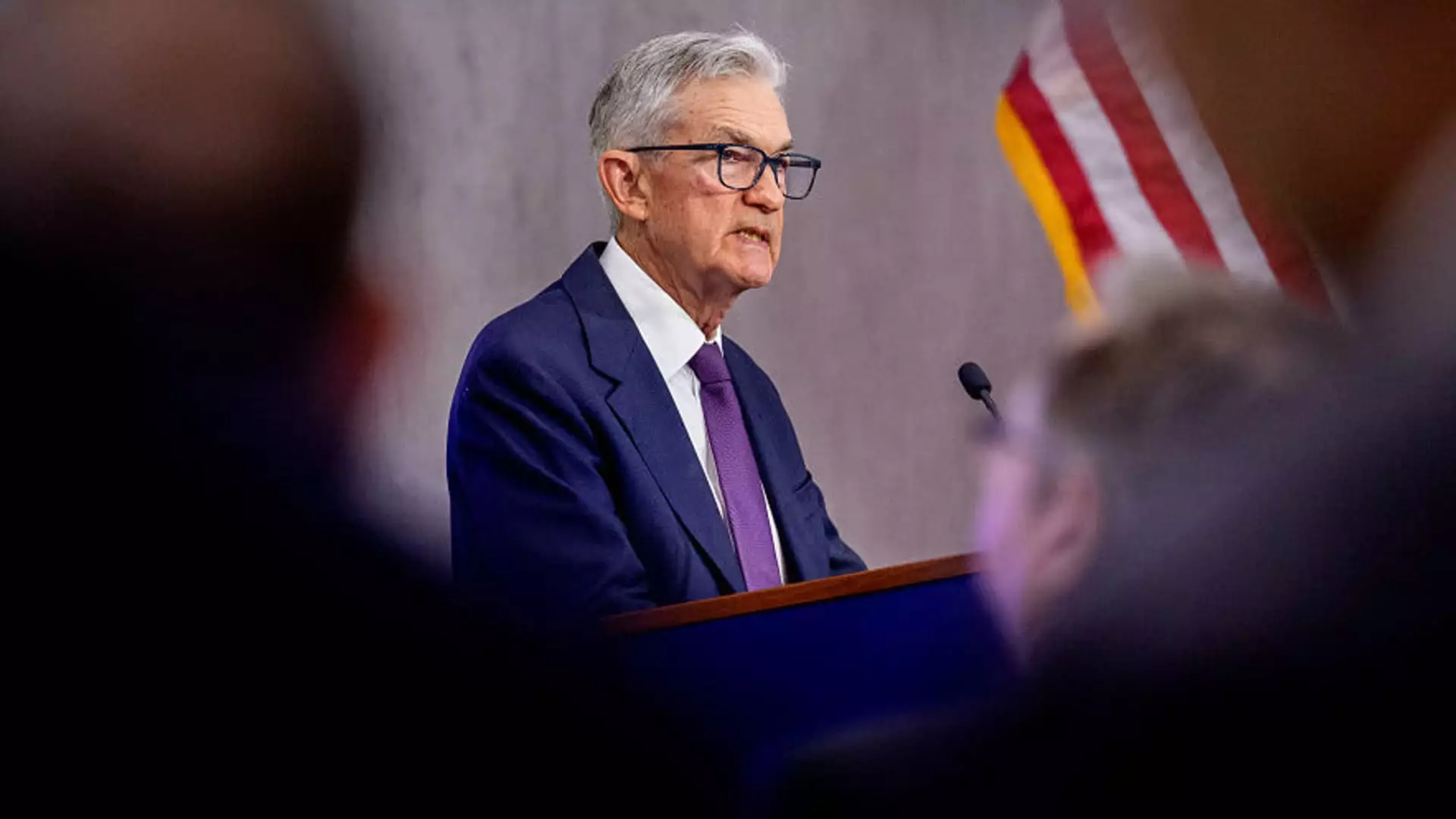In an astonishing display of political micromanagement, President Donald Trump has once more fixed his sights on Federal Reserve Chairman Jerome Powell, demanding immediate action to cut interest rates. The backdrop to this fervent outcry is a dismal report from ADP, which revealed an abysmal increase of merely 37,000 private sector jobs in May—a figure significantly overshadowed by a Dow Jones prediction of 110,000. This spectacle raises eyebrows about the efficacy of political pressure on economic institutions and begs the question: Is Trump’s critique grounded in economic sense or just a knee-jerk reaction to maintain his narrative of economic success?
Instead of adopting a rational approach to assess economic complexities, Trump resorts to the incendiary rhetoric often characteristic of his political brand. His recent posts on Truth Social showcased this, where he blares “Too Late” at Powell, implying that the Fed is operating on a schedule that doesn’t align with the frantic pulse of the economy. This language may resonate with his supporters, but does it serve the broader economic dialogue that demands nuance and informed analysis?
Shallow Analysis in a Complex Economy
It’s essential to recognize the limitations of the ADP report, which, while often influential, doesn’t comprehensively reflect the labor market’s health. It utilizes a fundamentally different methodology than the Bureau of Labor Statistics (BLS), which releases its data just two days later. The expectation that BLS will present an increase of 125,000 jobs underscores this inconsistency between the two reports. Such discrepancies shouldn’t merely be fodder for Trump’s fiery commentary but rather a reminder that economic indicators require careful interpretation.
Trump’s insistence that Powell lower interest rates to keep pace with international competitors like China shows an unconvincing understanding of monetary policy. Lowering rates may indeed encourage borrowing and initial growth, but it is not a silver bullet for a sluggish economy already riddled with geopolitical risks and fiscal uncertainties. The President’s simplistic view fails to recognize the delicate balance between inflation control and stimulus that central banks must navigate. This repeated pressure for immediate rate cuts threatens to compromise the Fed’s independence, which is a critical pillar of a stable economic environment.
Political Crosscurrents: Economic Policy vs. Public Image
Trump’s confrontational relationship with Powell reflects a larger trend of how political figures are drawn into the economic maelstrom. When Trump met with Powell last week, reports suggest the atmosphere turned confrontational, indicating a rift not just between two personalities but fundamentally opposing philosophies on governance and economic management. Powell has consistently maintained that monetary policy should be grounded in objective data, not fractious political demands—a stance that is commendable yet perilous in the charged political climate of today.
Trump’s remarks about Powell being a “major loser” expose not only his dissatisfaction but underline a worrying reality where personal animosities could jeopardize the integrity of economic governance. For a president to actively consider firing a Fed chair due to policy disagreements is a blatant attack on the central bank’s independence. While Trump has voiced intentions not to dismiss Powell, the consistent public tirades serve as a reminder of how the lines between politics and economic stability can blur.
The Global Context: America Against the Tide
Meanwhile, global economic leaders are not sitting idly. The European Central Bank (ECB) is expected to announce yet another round of interest rate cuts amid a landscape of easing inflation. This juxtaposition of approaches—Trump’s aggressive demands for cuts against the ECB’s pragmatic adaptability—illustrates a disconnect that might soon put American economic growth at a competitive disadvantage. As the world’s economies adjust to their unique situations, Trump’s unilateral pressure on the Fed contradicts the complexity of contemporary economic frameworks.
In the end, while Trump’s frustrations are palpable given the payroll data, the rhetoric he employs does little to elevate a meaningful discourse on economic policy. His approach reveals more about his political needs than an earnest evaluation of the economic landscape. Ultimately, what’s at stake is not just the president’s political viability but the broader implications for the American economy and its position relative to shifting global tides. Understanding economic indicators requires a depth of insight that mere political posturing cannot supply, and as Trump continues down this path, the repercussions could be significant.


Leave a Reply